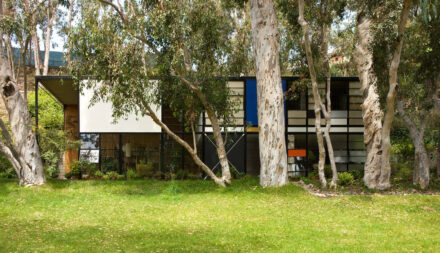
Jessica Maxwell, an alumna of the Getty Multicultural Undergraduate Internship program, at Princeton University in 2012
In 2004, Jessica Maxwell participated in the Getty Foundation’s Multicultural Undergraduate Internship program with an internship at the Getty Research Institute. She had such a great experience that she applied again the following summer, interning at the arts nonprofit LACE (Los Angeles Contemporary Exhibitions).
I spoke to Jessica for the second in a series of alumni interviews we’re featuring this summer to celebrate 20 years of supporting internships at arts organizations across L.A. County through the Getty Foundation’s program.
Now eight years after your first Getty internship, I understand you’re well on your way to completing a PhD in art history at Princeton. Walk us through your experience as a graduate student.
I’m currently in the process of writing my dissertation and expect to finish next year and go on the job market. During my time at Princeton, I’ve enjoyed completing several internships in the museum; my favorite experience has been giving gallery talks. For example, I led a group in a discussion of paintings by artist Jean-Michel Basquiat, helping them engage, and witnessed them learning through my tour; it is all very satisfying.
I also recently published an article on an exhibition by William Pope L. at the Mitchell-Innes and Nash Gallery. As a scholar interested in living artists, the proximity [from Princeton] to New York City is great for my subject area. I often hop on a train to conduct research at MoMA, see an exhibit there, or catch gallery shows that are of interest.
What specifically is your area of scholarly interest?
My focus is on contemporary artists, and particularly work made by African Americans. My dissertation is a monograph on Martin Puryear.

That Profile, 1999, Martin Puryear. Stainless steel and bronze, 540 x 360 x 136 in. The J. Paul Getty Museum, 99.SI.51. © Martin Puryear
Visitors to the Getty Center might remember we have one of Martin Puryear’s sculptures on our grounds. What a coincidence that you’re writing on Puryear after your summer here as a Multicultural Undergraduate Intern! Tell us a little bit about your memories of the program.
I worked at the Getty Research Institute (GRI) and helped with the scholar program, contributing to ephemera design, advertising, and events. At the time I was a studio art major, but I think it was while at the Getty that I really realized that graduate school was a possibility for me. Many of the GRI program assistants had completed degrees or were in school. In talking to them, I got a sense of what grad school was about and that it would be a good fit for me to explore all these questions that were percolating.
I remember our department had regular meetings where we discussed our projects. At first, I was nervous speaking up, as if I were a kid intruding at the “adults’ table.” But then by the end of the summer, I felt more comfortable and really felt that I had a place in the conversation.
Then you participated in the program again the following summer?
Yes, in 2005 I worked at LACE, cataloguing and organizing archival materials. I remember all the great conversations with my supervisor, everything from art to pop culture! At the time, it was interesting to see the documentation from all these historic exhibitions that took place there, and then recently to see this material featured in their Los Angeles Goes Live exhibition as part of the Getty’s Pacific Standard Time initiative was really exciting.
So, it sounds like your Getty internships really helped you carve out a career path.
Most importantly I think Getty Foundation’s intern program gave me sense that I could convert my passion for art into a viable career. It was a revelation that one could go to graduate school, complete a PhD, and go on to teach that to others. Then that there are places like the Getty and LACE populated by such professionals, and that this was a possibility for me.
As you came to these realizations, I wonder what part, if any, your own ethnic identity played in your decision-making process.
There is definitely a strong connection. My research focus is art produced by African Americans, and as an African American myself, I gravitate toward these figures because their work often relates to my own experience and struggles.
I see my scholarly research and writing as a form through which to learn more about myself and the world I live in. And what is so wonderful about the Getty Foundation’s internship program is that it allows students of all backgrounds to see that there are artists that look like them or sound like them.
So, I gather that you feel the diversity component of the Getty’s program is still relevant today, 20 years after it started.
Absolutely! A diversity of voices is necessary for the enrichment of any field, and this program served as a gateway for me. The Getty’s program in particular remains necessary because it encourages students of all races and classes to connect with the arts, especially those who might not otherwise consider this path. I hope the program continues for many years to come!
Text of this post © J. Paul Getty Trust. All rights reserved.




Big Congrats to her for making it in the Art World! I read her article and it’s absolutely wonderful. Very well written and very inspiring to see her succeed in her dreams.